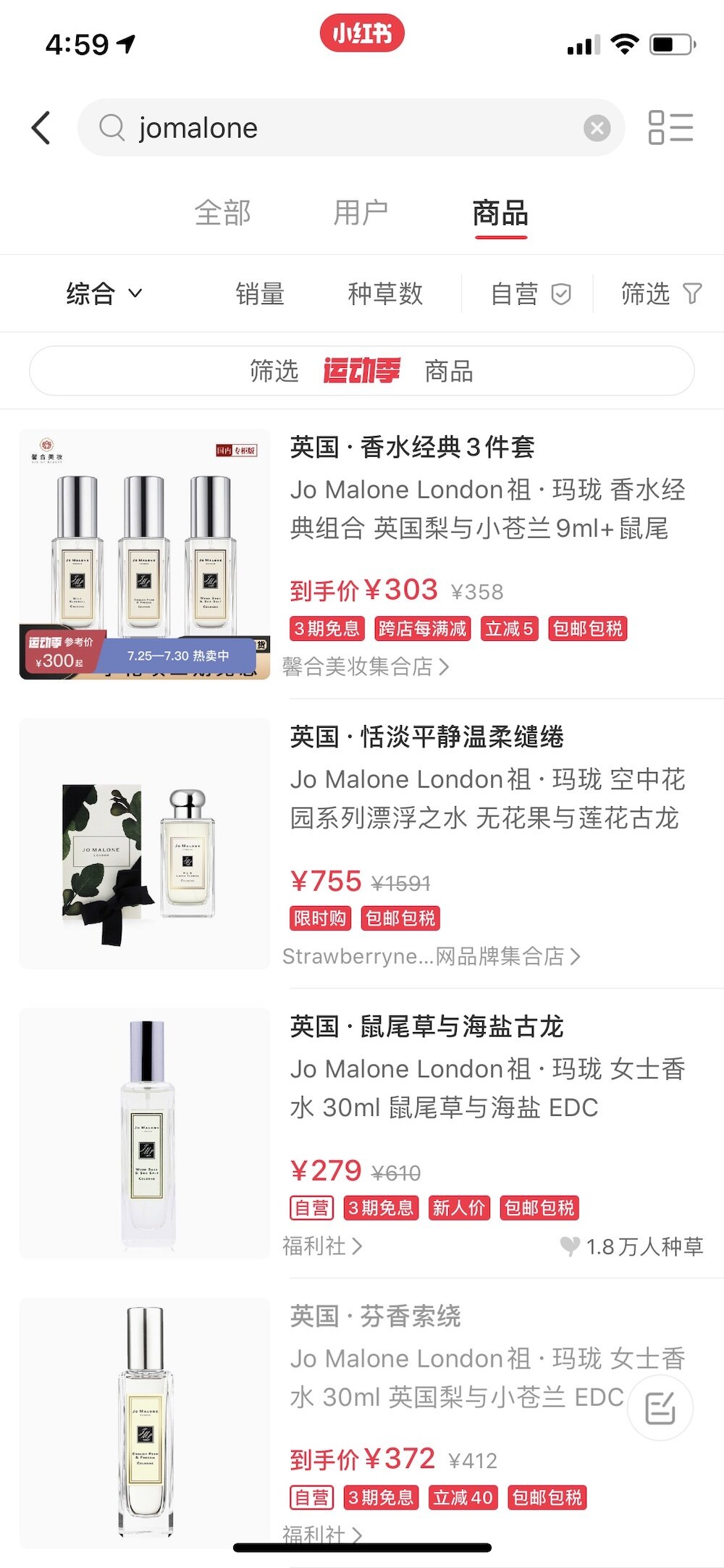What Is Little Red Book?
Known as the Instagram of China, Little Red Book (Xiaohongshu or RED) is a social media channel that connects users and brands.
Compared to other platforms, Little Red Book allows users to discover new and high-quality brands, current fashion trends, big and small influencers, lifestyle, and reviews about products.
It allows users to view content and will provide an influx of similar content to curate the users' interests. The channel does not rely on purchases directly but can influence the sales of brands through reviews, which makes it an ideal social media platform for brand marketing.
“As most Chinese social media platforms, Little Red Book marketing requires a different approach compared to western social media marketing.”
Overview of Little Red Book
Like Instagram, Little Red Book connects users to different people and brands. It features a design layout that allows users to post 3-6 pictures with relatively short text descriptions. It allows users to comment, like, share, follow, and private message on content that is posted.
Initially starting as a product review and shopping tips channel, the platform has garnered over 100 million monthly active users. The target audience for Little Red Book is young female shoppers who live in major cities. About 90% of the active users are female, and 45% of those are under 24 years old, they reside in major cities, and are frequent shoppers.
Little Red Book has a strong focus on foreign brands, which receive large amount of content engagement. These brands are promoted on the site through reviews and shares by users. Engagement depends on the position of the brand, the bigger it is, the more it has.
With product reviews at its core, it allows users to discover new brands and products. It features endless possibilities to finding new content through its explore page that allows users to discover trending products or viral posts.
Like most social media platforms, it has its own restrictions. It is not curated toward everyone, with a target audience of mostly young females who reside in the city and are major shoppers. The categories that top Little Red Book promotions are cosmetics, clothing, electronics, skincare, maternity, and jewelry. Other apps and sites are banned from being mentioned which makes things potentially difficult for a brand.
With the potential obstacles a new brand could face on Little Red Book, there are also endless possibilities of brand and content marketing.
Content Marketing on Little Red Book
Content on Little Red Book lasts longer compared to other channels. The marketing of content on Little Red Book is medium- or long-term plans, not short term. Other channels receive less exposure the more time passes on, while Little Red Book benefits from content that is exposed for a longer period. Certain social media channels start to lose their content exposure after a week compared to Little Red Book which starts to receive more interest over the week and weeks to come. This type of exposure is based on the different types of keywords the post contains.
Choosing the right cover picture can increase the traffic the content gets. Having a clear picture of the product can let users see right away what they are looking for and what the brand has to offer. Having a blurry photo or unordinary angle meant for aesthetic purposes can lead potential customers away to another product. Having a natural feeling to the photo tends to increase users’ potential to engage with the content.
This can also be the same with the content itself. Natural looking and localized content tends perform better compared to professional looking content because of the feeling it gives off. The average user wants to see what if would look like in daily life, not how it would look like in an unnatural setting.
Creating natural and localized content can be very easily accomplished by providing products to influencers that are able to naturally show off the product through their posts. These influencers have their own persona and lifestyle, so allowing them to promote the products to their established brand through their vision can lead to more inviting content.
“Natural looking and localized content tends perform better compared to more professional looking content.”
Brands can increase its content traffic with selection of suitable keywords. Research of brand’s competitors is crucial. Having this research can allow a brand to understand what types of keywords were used to further expand the product and reach its audience. Monitoring the trendy keywords requires time and is constantly changing as the industry moves on.
Personal accounts of influencers tend to use more emojis and shorter content. This type of content may not be suitable for brands which need to maintain their image.
Organizing giveaways will increase traffic and is a good way to accumulate new followers, especially for new accounts. Lucky draws are natively supported by the platform and can increase the following of brands. Having a giveaway leads users to follow, comment, like and save content from the brand to win a gift. Usually, the users who interact with the post are only interested in the post because of the gift, but the more users there are interested in the gift and interact, the more viral it becomes and the potential to reach the targeted audience.
Influencers on Little Red Book
Influencers drive the social media frenzy in China, so having one promote a product can lead to an increase in sales. There are different ways to get an influencer to promote a product. These campaigns can be expensive but will increase brand awareness better than any other type of advertising. Read our guide on how to find the right influencers.
Advertising on Little Red Book is just like advertising on most western social media platforms. There are three types of advertising on RED: Newsfeed ads for brands, keyword search ads, and newsfeed ads for personal accounts.
Price for each type of advertising depends on a range of factors, most importantly the category of products being promoted and the time picked for promotion (eg. during a shopping festival or at night hours).
Little Red Book store
While most purchases are not directly on Little Red Book, the platform does have its own online store. The main advantage is that users don’t need to leave the platform and easily transition from content posted by an influencer to purchase.
That said, the sales commission paid to RED is relatively higher compared to other e-commerce platforms and, most importantly, Chinese shoppers are used to having all their shopping done via Tmall or JD.
Nevertheless, it is a great support sales channel or a niche channel for lesser known brands.
Similar to other Chinese e-commerce platforms, it has integrated live-stream options.
Conclusion
Little Red Book provides a variety of marketing opportunities for a brand with its ads, influencers, store, and content. Social media platforms drive the Chinese market. Being able to utilize these platforms effectively can lead to great success. Using social media platform Little Red Book is able expand a brands image and exposure. It can increase sales and generate traffic through advertisements and marketing campaigns using big or small influencers.
“About 90% of the active users are female, and 45% of those are under 24 years old, they reside in major cities, and are frequent shoppers.”
RED is a fantastic platform for most brands selling to Chinese customers and should be considered. This is especially true for brands selling to younger female audience.




